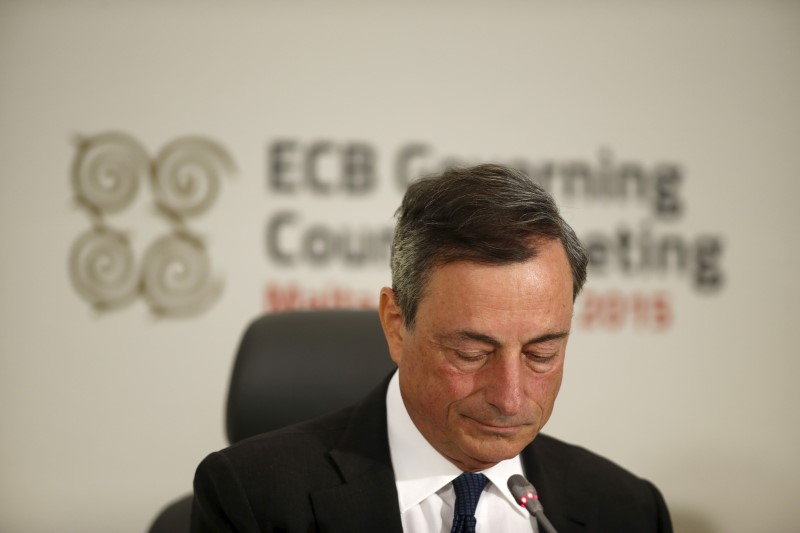Investing.com – The European Central Bank (ECB) kicked off its two-day policy meeting on Wednesday with investors focusing on whether the euro zone monetary authority’s president Mario Draghi will announce an extension of the bond-purchase program.
While no change in interest rates currently at 0% or the deposit facility rate of minus 0.4% are expected out on Thursday at 7:45AM ET (11:45AM GMT), market players will look to Draghi’s press conference just 45 minutes later.
With euro zone inflation far below the ECB’s 2% target rate, experts are convinced that Draghi will have to extend the asset purchase program beyond its current end-date of March 2017 and above the target of €1.7 trillion ($1.9 trillion). The ECB is currently buying €80 billion-a-month ($90 billion).
However, experts are divided over whether Draghi will make the announcement official on Thursday. A recent Bloomberg survey showed that more than 80% of economists expect the action to be taken this year, but less than half are betting it will take place on Thursday. The rest forecast that the announcement would come at the October or December meeting.
Though analysts do not believe there will be any new policy moves, most expect Draghi to maintain a dovish stance and hint at more easing further down the road.
ECB may need to lift restrictions on bond purchases
Several experts suggest that the major issue to further moves by the ECB is the scarcity of assets to purchase.
Analysts at Nordea pointed out that the ECB could run out of eligible euro area bonds to purchase by the turn of the year unless it eases its own restrictions.
The major issue is the fact that the ECB has placed a limit for the yields it can buy at the negative 0.4% deposit rate, but TD Securities calculates that 28% of euro zone bonds and 66% of German bonds are yielding below this level.
"Even for Finland, at this level of yields, the (ECB) can probably still buy for another five to six months,” Société Générale commented in a note.
“Another fall in yields however could reduce that horizon, hence the ECB may want to be pre-emptive," these analysts warned.
Among the policymakers’ options, they could remove the deposit rate limit in order to widen the number of bonds available.
Another possibility would be for the ECB to remove the self-imposed ceiling of not buying more than 33% of any bond.
Though considered an unlikely step at this time, the ECB could also scrap its capital key rule which guides the amount of purchases from each country in accordance with the size of its economy.
